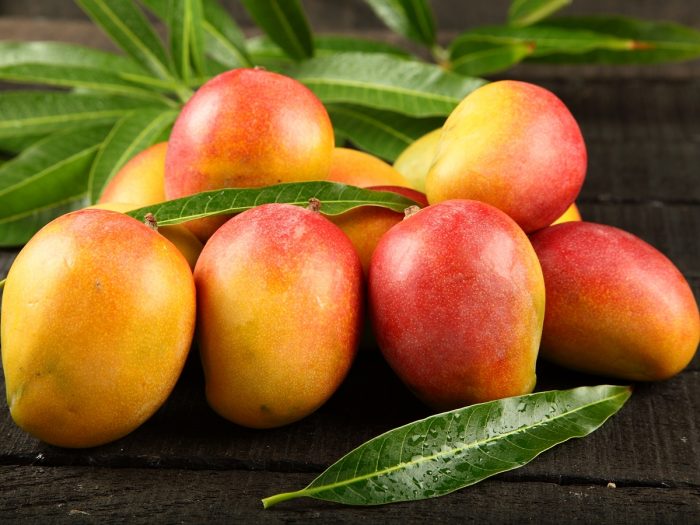Most people throw away the mango skin after peeling their favorite exotic fruit, but you may want to hold on to that nutrient-dense peel after knowing its benefits.
Can you Eat Mango Skin?
You can eat mango skin, but there are a few things to take into consideration, such as the other active ingredients in the peel. These peels have phytonutrients and antioxidants. But they also have a compound called urushiol, which is the same toxin that causes such severe side effects when you are exposed to poison ivy. For people who are overly sensitive to this compound, eating mango skin can cause inflammation and other unwanted side effects. [1]
Some people also dislike the tough, slightly waxy, bitter taste of the mango skin. As long as you’re willing to do some chewing, however, you can enjoy a number of potential health benefits, because the peel is as healthy as the fruit itself, in certain ways. For example, the vast majority of the carbohydrates and sugars are found in the flesh, but the peel lacks these components. Instead, it loads up on other nutrients, making for an unusual low-calorie superfood. [2]

Delicious mangoes Photo Credit: Shutterstock
Nutritional Value of Mango Skin
As mentioned, mango skin is very low in sugars and carbohydrates but contains notable levels of vitamin A, vitamin C, dietary fiber, and various phytonutrients. The calories in the skin are negligible unless you eat a very large amount, but this isn’t recommended, due to the levels of potentially toxic urushiol. For some, the nutritional benefits outweigh the risks of an allergic reaction, particularly if the body doesn’t react negatively to eating normal mango fruit. [3]
How to Eat Mango Skin?
There are a number of ways you can include mango skin in your daily diet, such as blending them into a healthy fruit smoothie. Some people also allow them to dry and harden, becoming similar to fruit chips. Most people don’t enjoy eating mangoes with the skin still attached, but eating a whole mango raw is also possible if you want the extra nutrients. Peeling a mango into a salad, or as a citrus garnish in a soup or stew, could also incorporate the skin into the diet. It is highly recommended that you thoroughly wash your mango before eating the skin, as this fruit is known to retain old traces of pesticides and chemicals from the fields and orchards. [4]
